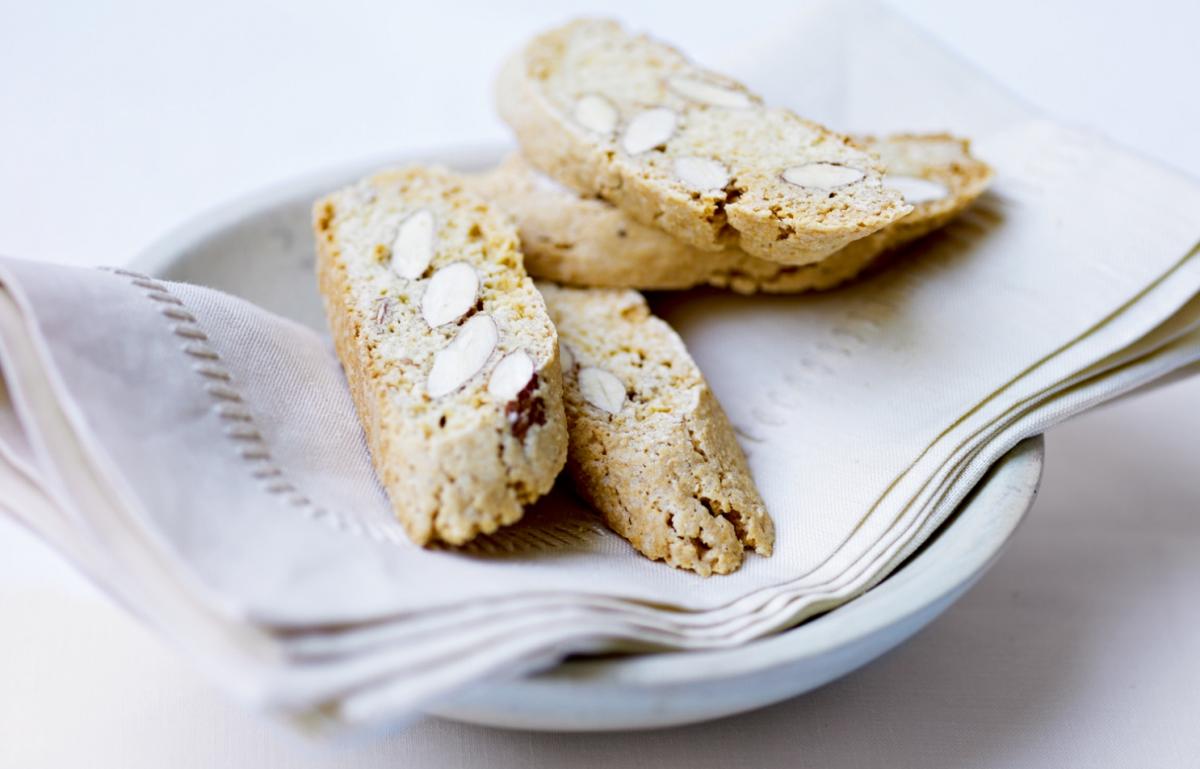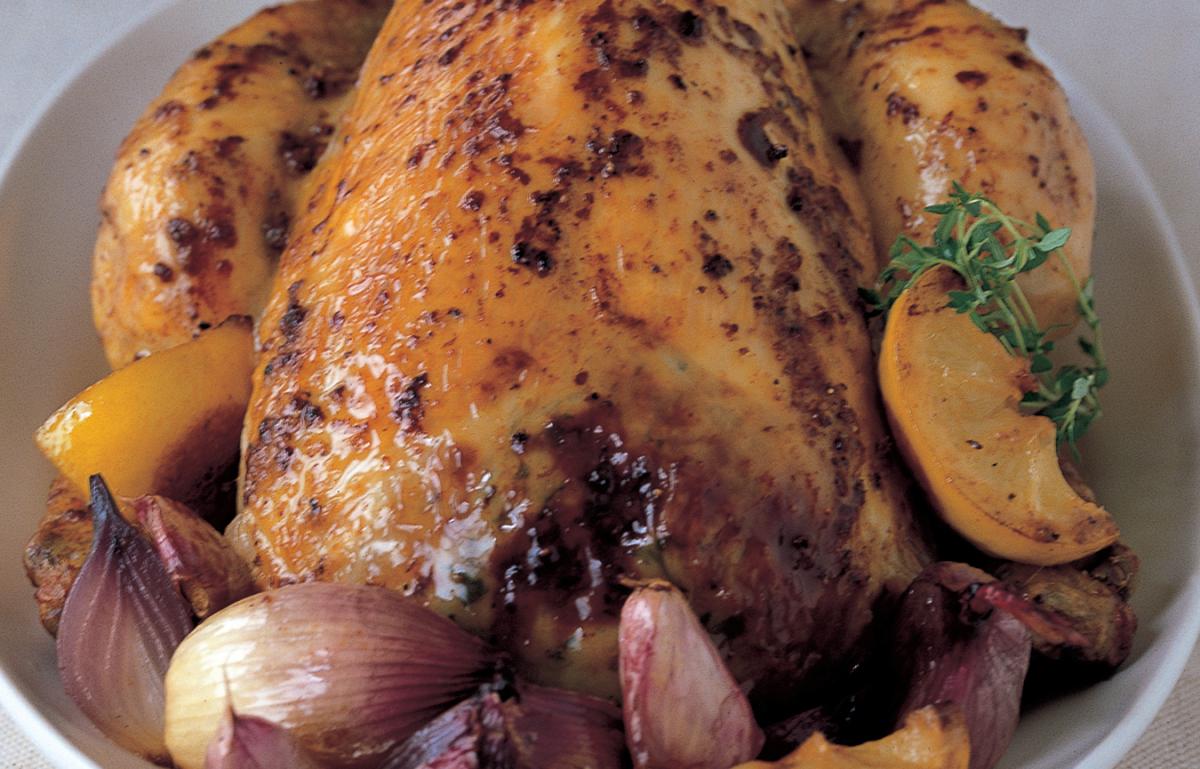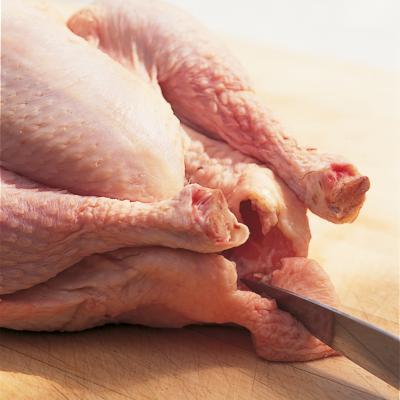


First catch your chicken.
Seventy-five years ago chickens were slowly reared and fattened for the table. They were fine, plump birds with lots of succulent flesh and luscious, concentrated chicken flavour. A whole family could dine on a roast chicken and still have some left over. Roast chicken was very special – not an everyday thing, but something to be anticipated and savoured. The sad thing is there are young people who have never actually tasted the real thing. The reason? Progress. Now I’m not against progress – far from it – but it can sometimes run away with us, forcing us to rein in a bit and try to get back on track. What’s gone wrong?
Mass production means masses of cheap chickens. We have created new breeds of fast-growing chickens that can be reared very intensively, which means limited living space in a computer-controlled environment and feed containing antibiotics and growth promoters. The average life span of these hens is less than 50 days. At the end of this short, uncomfortable life the chicken is then plunged into scalding-hot water, after which a mechanical process removes its feathers. During this process it absorbs water – up to 7.4 per cent of its own body weight – and then it’s likely to be frozen, water and all. The result is coarse-grained, watery, limp chicken that has no flavour.
How can we put it right?
For the most part we can’t, because a large section of the community wants cheap chicken and doesn’t care about flavour. Okay, everyone is free to choose, but ironically, up until now, that has not been the case. People who really do care about flavour have been very limited in their choice, and tracking down a real, naturally reared old-fashioned chicken has not been easy.
What is a proper old-fashioned chicken?
The first thing we need to be concerned with is breeding. The bird has to be slow growing, or it should grow naturally, as nature intended. It must have a reasonable life span of not less than 81 days. It needs to have its own space and not live in overcrowded conditions – and it has to be truly free range. The best type of chicken has 24-hour access to the outdoors, breathes fresh air, has access to a large field to scratch about and has a truly natural existence. It is protected from predators by an electric security fence, has access to shelter when needed, has a place to roost and a plentiful supply of grain and fresh water. In this country, if you buy a chicken that is labelled ‘free range’, that can mean it’s ‘sort-of free range’ because we have a kind of cock-eyed labelling law that includes three types of ‘free-range’ chickens. So my advice is to forget the words ‘free range’ on their own and look for the words Traditional Free Range or, in some cases, Free Range Total Freedom.
The next question to ask is: has it been dry-plucked?
Real chicken does not get dunked into hot water. For the flavour to be at its best, dry-plucking is the optimum process. A little age adds a lot of flavour! If you hang a chicken with its guts intact in a controlled temperature it will, like cheese , mature naturally, which will concentrate the flavour. I repeat, I’m all for progress, but I’ve never wanted good food to be only for the privileged few who are in the know. What I’ve observed is that the very best food producers in the world today are those who use traditional skills and methods alongside the latest technology.
Where can you buy real chicken?
If you want what I would call a small chicken weighing about 3 lb (1.35 kg) and suitable for very fast roasting, then the best-flavoured chickens I’ve found that are widely available are French and called Label Rouge, and the label may also state either ‘raised in the open air’ or ‘raised in total freedom’. This type of chicken is also great in casseroles and so on. If you want chicken joints, these are also available.
Follow us Like us on Facebook Follow us on twitter Follow us on instagram Follow us on pinterest Follow us on youtube
© 2001-2024 All Rights Reserved Delia Online